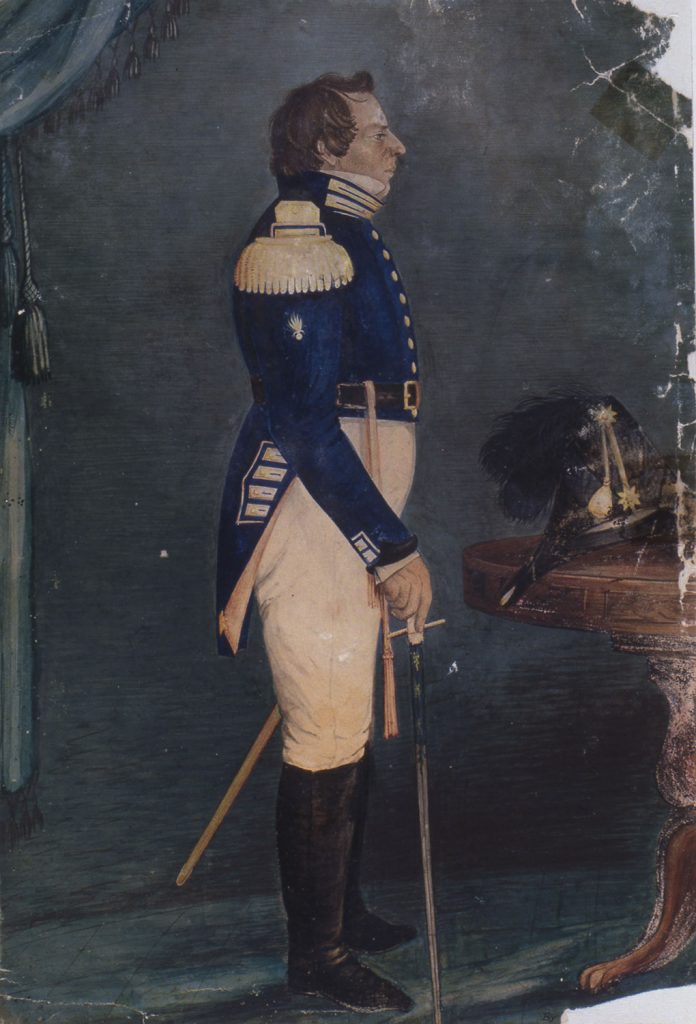Joseph Smith, Jr.
(1805-1844)






By Susan Easton Black
“There was in the place where we lived an unusual excitement on the subject of religion,” wrote Joseph Smith of Manchester, New York. “The whole district of country seemed affected by it” (JS-History 1:5). Multitudes united with the different religious parties causing quite a stir in his neighborhood. “Lo here, lo there” was their cry and “priest contending against priest, and convert against convert.” Their “strife of words and a contest about opinions” left young Joseph confused (JS-History 10:6). He wondered, “Who of all these parties are right; or, are they all wrong together?. . . and how shall I know it?” (JS-History 1:10). He concluded “so great were the confusion and strife among the different denominations, that it was impossible for a person young as I was, and so unacquainted with men and things, to come to any certain conclusion who was right and who was wrong” (JS-History 1:8).
Reading the Epistle of James, first chapter and fifth verse, “If any of ye lack wisdom, let him ask of God, that giveth to all men liberally, and upbraideth not, and it shall be given him,” gave him hope, for “never did any passage of scripture come with more power to the heart of man than this did at this time to mine” (JS-History 1:12).
In the morning of a beautiful clear day in the spring of 1820, fourteen year old Joseph walked into the woods on his family farm to ask God which Church he should join. In answer to his prayer, he said, “I saw a pillar of light exactly over my head, above the brightness of the sun, which descended gradually until it fell upon me. . . I saw two Personages, whose brightness and glory defy all description, standing above me in the air. One of them spake unto me, calling me by name and said, pointing to the other—This is My Beloved Son. Hear Him” (JS-History 1:17).
Recounting his vision with a local Methodist preacher, Joseph recalled, “Excited a great deal of prejudice against me among professors of religion, and was the cause of great persecution, which continued to increase” (JS-History 1:22). In spite of the persecution, Joseph would not recant his testimony that “I had actually seen a light, and in the midst of that light I saw two Personages, and they did in reality speak to me. I knew it, and I knew that God knew it, and I could not deny it” (JS-History 1:25).
Three and a half years after his vision, the angel Moroni appeared to seventeen year old Joseph and told him of a book “written upon gold plates, giving an account of the former inhabitants of this continent” (JS-History 1:34). At length, Joseph obtained the gold plates from angel Moroni and translated the ancient writings. His translation was published in 1830—The Book of Mormon.
Family, friends, and newfound acquaintances read the Book of Mormon and believed it to be the word of God. On April 6, 1830 a few believers gathered at the Peter Whitmer Sr. log home in Fayette, New York, to organize what would become The Church of Jesus Christ of Latter-day Saints. From small beginnings the Church grew exponentially in spite of mounting persecution against Joseph Smith and his followers. Rather than succumb to persecution, with boldness the newly baptized declared the truths of the Book of Mormon. They accepted mission calls to spread news of the Restoration throughout the United States and Great Britain. Young and old, learned and illiterate listened to their Restoration message and embraced the teachings of the new faith.
Witnessing the rapid growth of the Church and the impact Joseph Smith had on citizens of Nauvoo, Josiah Quincy, a former mayor of Boston, wrote,
It is by no means improbable that some future textbook will contain a question something like this: What historical American of the nineteenth century has exerted the most powerful influence upon the destinies of his men? And it is by no means impossible that the answer to that interrogatory may be thus written: Joseph Smith, the Mormon Prophet.1
Why would this be so? Wandle Mace said, “[Joseph] would unravel the scriptures and explain doctrine as no other man could. What had been mystery he made so plain it was no longer mystery. . . . I ask, who understood anything about these things until Joseph being inspired from on high touched the key and unlocked the door of these mysteries of the kingdom.”2 How could Joseph do this? He holds “the keys of this Last Dispensation, and will for ever hold them, both in time and eternity” (D&C 1135:3).3
When Joseph was killed in Carthage Jail at age 38, the New York Herald reported on July 8, 1844, “They cannot get another Joe Smith. . . The Latter Day Saints’ have indeed come to the latter day.” Such a bold erasure of The Church of Jesus Christ of Latter-day Saints was not the plan of God. Orson Hyde boldly prophesied, “I will prophesy that instead of the work dying, it will be like the mustard stock that was ripe, that a man undertook to throw out of his garden, and scattered seed all over it, and next year it was nothing but mustard. It will be so by shedding the blood of the Prophets—it will make ten saints where there is one now.”4
There are now millions of Latter-day Saints throughout the world who have embraced the word of God and Joseph Smith as a prophet, seer, revelator, and translator. They have entered baptismal waters and made sacred covenants in holy temples, and now praise the memory of his name. In congregations worldwide, they speak with wonder of his greatness, for to them he was a prophet of God.
1. Josiah Quincy, Figures of the Past from the Leaves of Old Journals (Boston, 1883), p. 376.
2. Wandle Mace Autobiography (1809-1890). Church History Library. Salt Lake City.
3. Brigham Young, “Intelligence, etc.,” Journal of Discourses (Liverpool: Latter-Day Saint Depot, 1853), 7:289-290.
4. Orson Hyde quote, in Smith, History of the Church, 7:198.
Additional Resources
- Joseph Smith and His Papers: An Introduction (josephsmithpapers.org)
- Joseph Smith Pedigree Chart (josephsmithpapers.org)
- KnoWhy #1 – What Does it Mean to Be a Martyr?
- KnoWhy #50 – Why Did Moroni Quote Isaiah 11 to Joseph Smith?
- KnoWhy #145 – Why Was a Stone Used as an Aid in Translating the Book of Mormon?
- KnoWhy #193 – Why Did Moroni Deliver the Plates on September 22?
- KnoWhy #261 – Where Did Joseph Smith Get His Doctrinal Ideas About Christ?
- KnoWhy #264 – Why Are there Multiple Accounts of Joseph Smith’s and Alma’s Visions?
- KnoWhy #279 – Why Did Joseph and Oliver Seek Authority to Baptize?
- KnoWhy #285 – Where Did Joseph Smith Get His Teachings on the Family?
- KnoWhy #290 – Where Did Joseph Smith Get His Ideas about the Physical and Spiritual Gathering of Israel?
- KnoWhy #351 – Why Does God Sometimes Allow His Saints to Be Martyred?
- KnoWhy #397 – Why Would God Choose an Uneducated Man to Translate the Book of Mormon?
- KnoWhy #409 – Is There Evidence That Joseph Smith Possessed a Urim and Thummim and Breastplate?
- KnoWhy #413 – How Can We Know What to Believe about Joseph Smith’s Personal Character?
- KnoWhy #417 – Were Joseph Smith’s Translation Instruments Like the Israelite Urim and Thummim?
- KnoWhy #454 – What Do the Kinderhook Plates Reveal About Joseph Smith’s Gift of Translation?
- KnoWhy #460 – Why Are People Exhausted by Powerful Spiritual Experiences?
- KnoWhy #507 – Was Joseph Smith the “Author” of the Book of Mormon?
- KnoWhy #515 – What Do We Know About the “Anthon Transcript”?
- KnoWhy #555 – Did Joseph Smith’s Mother Believe He Could Have Written the Book of Mormon?
- KnoWhy #556 – Why Did Joseph Smith Attempt to Secure the Book of Mormon Copyright in Canada?
- KnoWhy #589 – Why was it Easy to Join a Church in Joseph Smith’s Day?
- KnoWhy #590 – Why Could Joseph Smith Testify in Court at Age 13?
- KnoWhy #594 – Why Was Joseph Smith Accused of Being a “Disorderly Person” in 1826?
